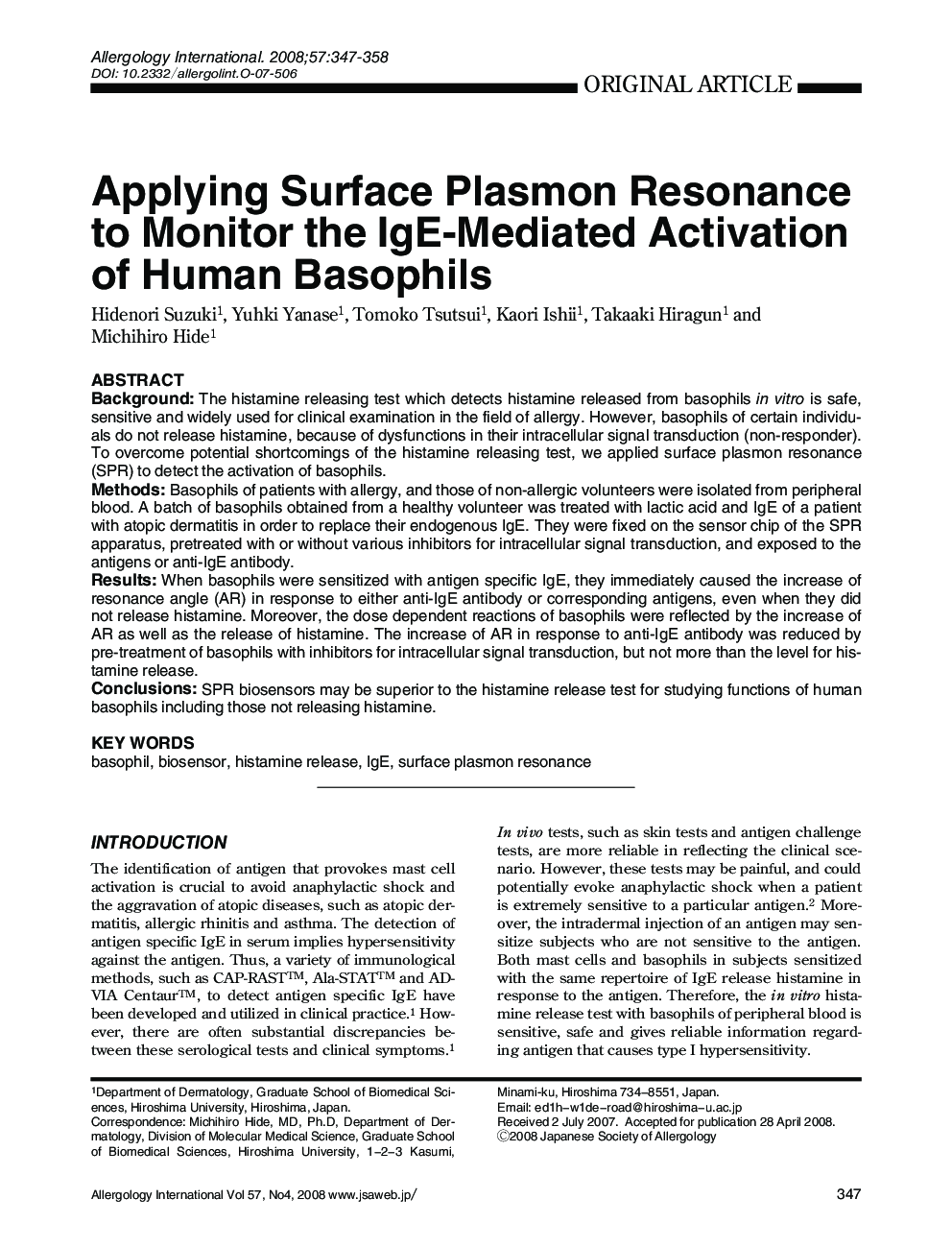| Article ID | Journal | Published Year | Pages | File Type |
|---|---|---|---|---|
| 3341060 | Allergology International | 2008 | 12 Pages |
ABSTRACTBackgroundThe histamine releasing test which detects histamine released from basophils in vitro is safe, sensitive and widely used for clinical examination in the field of allergy. However, basophils of certain individuals do not release histamine, because of dysfunctions in their intracellular signal transduction (non-responder). To overcome potential shortcomings of the histamine releasing test, we applied surface plasmon resonance (SPR) to detect the activation of basophils.MethodsBasophils of patients with allergy, and those of non-allergic volunteers were isolated from peripheral blood. A batch of basophils obtained from a healthy volunteer was treated with lactic acid and IgE of a patient with atopic dermatitis in order to replace their endogenous IgE. They were fixed on the sensor chip of the SPR apparatus, pretreated with or without various inhibitors for intracellular signal transduction, and exposed to the antigens or anti-IgE antibody.ResultsWhen basophils were sensitized with antigen specific IgE, they immediately caused the increase of resonance angle (AR) in response to either anti-IgE antibody or corresponding antigens, even when they did not release histamine. Moreover, the dose dependent reactions of basophils were reflected by the increase of AR as well as the release of histamine. The increase of AR in response to anti-IgE antibody was reduced by pre-treatment of basophils with inhibitors for intracellular signal transduction, but not more than the level for his- tamine release.ConclusionsSPR biosensors may be superior to the histamine release test for studying functions of human basophils including those not releasing histamine.
